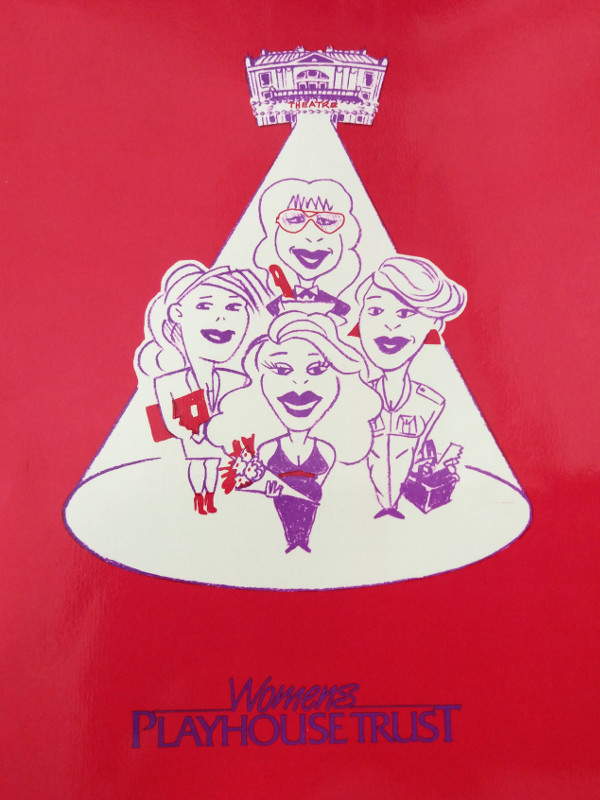The Women's Playhouse Trust Archive
Overview
The Women’s Playhouse Trust (WPT) grew out of a movement "in pursuance of the acceptance of Feminist perspectives in the profession, whilst creating more job opportunities and a better working climate for women in all areas of theatre". Its inaugural meeting was held in The House of Commons on 17 November 1981.
The first WPT production was a revival of Aphra Behn’s "The Lucky Chance", performed at The Royal Court Theatre in 1984, starring Alan Rickman and Harriet Walter. In total the WPT produced 10 theatrical plays between 1984 - 1994, 2 sung pieces in 1994 and 1997 and more than 60 workshops and rehearsed readings at venues across London during this period. They were instrumental in developing the careers of writers such as Winsome Pinnock, Clare McIntyre and Deborah Levy. Their work during the 1980s and 1990s played a key role in making female participation in late 20th Century British Theatre more visible, and viable.
The four founding WPT members were Christine Eccles, Sue Parrish, Rosemary Squire and Jules Wright. Christine Eccles left the company in 1983. Sue Parrish resigned in 1987 and later became Director of the Sphinx Theatre Company. Rosemary Squire stood down in 1988 and subsequently founded the Ambassador’s Theatre Group with her husband, Sir Howard Panter.
Jules Wright (1948 - 2015) was therefore the only founding member remaining after 1988. She was a dynamic Australian Theatre Director who had been resident in the UK since 1974, gaining her PhD from the University of Bristol with a thesis titled "An Exploration of the Theory and Practice of Classical Psychodrama in Psychiatric Hospitals: The Development of an Alternative Model". She is the main thread of continuity in the collection, to the extent that from around the early 1990s Jules Wright and the WPT effectively became synonymous. From this time on, the WPT began to use the former Wapping Hydraulic Power Station (built in 1890 and decommissioned in 1977) as a venue.
Jules steered the WPT’s artistic direction increasingly towards the avant-garde and a less overt / more subversive approach to its feminist agenda. Their first performance at Wapping was "Cityworks 1: Dirt" in October 1993. This was a key moment in the WPT's complex and nebulous organisational transition into "The Wapping Project", as was the installation "Intensities and Surfaces" (1996) by Anya Gallacio, which marked the WPT’s formal departure from theatre to live art. After a period devoted to the WPT's purchase and redevelopment of the Wapping building, "The Wapping Project" officially opened in October 2000 with "Conductor" by the installation artist Jane Prophet.
The organisation continued to use both company names in tandem, but it is at this point that the "Women’s Playhouse Trust" could be said to have fully transitioned into "The Wapping Project", a post-industrial space for both male and female contemporary artists to produce multi-disciplinary site-specific exhibitions and performances. For a time The Wapping Project was "one of London’s hippest arts venues", hosting both commissioned and non-commissioned exhibitions and performances. Other key site-specific creative works at The Wapping Project included "Butterfly" by Richard Wilson (2003), "Bloom" by Sam Spenser (part of the "Yellow Since 1877" show in 2007), and "Yohiji Making Waves" by Yohiji Yamamoto (2011).
The Wapping building was sold to a developer and closed on December 22nd, 2013 and documentation within the WPT collection ends at this time.
Jules Wright died of cancer on June 21st, 2015. The directorship passed on to her widower and Jules’ deputy, and the WPT/ Wapping Project continues as an ‘ungrounded’ "platform for the continuous development of ideas, thoughts and people."
What the collection holds
The archive of the Theatre Company The Women's Playhouse Trust (WPT). It also incorporates the archive of The Wapping Project (the arts organisation that the WPT morphed into), and of Jules Wright (1948 - 2015), the dynamic Australian Theatre Director who co-founded both and is the main thread of continuity between them.
Contained in the collection are: posters, flyers, photographs, programmes, scripts and production and dramaturgical correspondence, and a large quantity of administrative documentation (financial, legal and architectural) from the running of the 2 organisations.
The online catalogue for this collection can be viewed here:
WPT - The Women's Playhouse Trust (WPT) collection
Further information
- The Wapping Project's official website and Vimeo site.
- Article about Jules' Honorary Degree from the University of Bristol.
- Obituaries for Jules Wright on The Guardian, The Independent and The Conversation.
